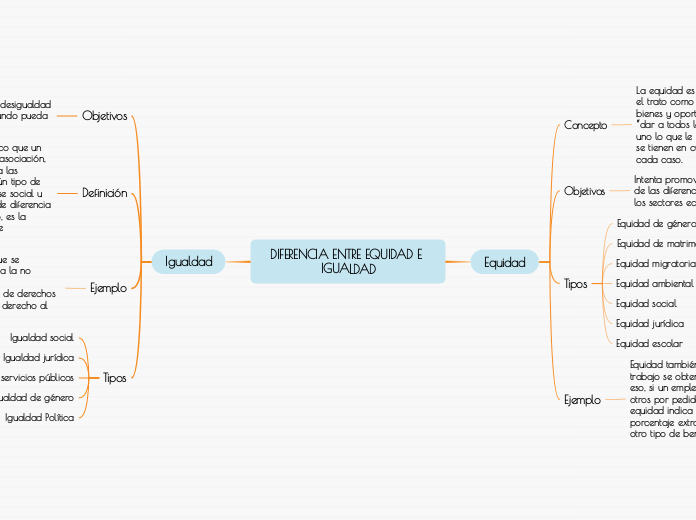TIPOS DE ASOCIACIONES
To name your story, you have to think about the overall message and what you want your audience to understand from the story. Also, make it relevant and easy to remember.
FUNDAMENTO CONSTITUCIONAL Y LEGAL
The ending of a story is essential. We all know that if the ending is weak, what happened before loses its importance. So make it unpredictable, but fair. A resolved ending answers all the questions and ties up any loose threads from the plot.
fundamento legal
This is the closure section of the story.
See examples of possible outcomes below:
- all problems have been solved
- it's clear how each one of your characters ends up
- your main character is transformed by the challenge
La ley Federal del Trabajo
Try answering these questions to come up with a closure:
- Have all the problems been solved?
- Is there a clear picture of what happens with each character in the story?
- Has the challenge transformed your main character?
- How do the characters feel in the end?
Fundamento constitucional
This is the moment when the main character surpasses the last obstacle and finally faces their greatest challenge.
The climax usually follows one of these patterns:
- realization
- resolution
- choice
Type in your answer.
Artículo 123.- Toda persona tiene derecho al trabajo digno y socialmente útil; al efecto, se promoverán la creación de empleos y la organización social de trabajo, conforme a la ley.
ASOCIACION PROFESIONAL Y SINDICAL
The middle of the story is where you add layers of complications that will lead to the end. Reveal more about the character's journey. Did their personality go through changes? How did they overcome the challenges? And as you build up the story’s central conflict, make it more personal to that character. Also, from the middle act, you have to lead into the final act.
ASOCIACION SINDICAL
Your character(s) need(s) motivation in order to solve the challenge(s).
Es un derecho que hace parte de aquellos pertenecientes a las libertades individuales, siendo una prolongación de los derechos a la libertad de expresión, pensamiento y de reunion. Consiste la garantia en la posibilidad que tiene toda persona de crear o adherirse libremente a una asociación, y a través de la misma desarrollar aquellas actividades para la cual fue creada, siempre y cuando su proceder sea licito.
Why does your character need to confront this challenge? What does he/she expect to accomplish by solving it?
See a few examples:
- will marry in 3 days
- can fix the mistakes of the past
ASOCIACION PROFESIONAL
Each story has a main character and that character usually needs to solve a problem or challenge. The character's challenge is the one that creates tension throughout the story.
La Constitución Política en la fracción xvi del apartado A del artículo 123, consagra la garantía a la asociación profesional indicando que “tanto los obreros como los empresarios tendrán derecho para coaligarse en defensa de sus respectivos intereses, formando sindicatos”.
In most stories, there are 3 challenges. The number 3 is a mystical number symbolizing completeness. Try to come up with interesting challenges with which your character needs to struggle.
See a few examples below:
- turns into a werewolf at night
- is sent back in time
Artículo 356.- Sindicato es la asociación de trabajadores o patrones, constituida para el estudio, mejoramiento y defensa de sus respectivos intereses.
ASOCIACION GENEREAL Y ASOCIACION PROFESIONAL
In the beginning of the story (or the exposition), you will need to introduce the setting and characters. You might also want to introduce the main conflict. This part of the story is important because it gives the reader necessary background information and maybe even a first insight into a character’s personality.
PROFESIONAL
The setting (time & place) of a story can change throughout the plot.
REPRESENTAN LOS INTERESES PROFESIONALES
The weather is an important element in your story because it can highly influence the ambiance and the mood of the characters.
PERTENECE A LOS PATRONES
Decide if you want to include an element of nature in your story. For example, a rainbow can be a very nice choice for a happy ending. The mist in a story can represent mystery and secrets. A thunder can appear in the background at the moment when the 'bad guy' of the story makes its appearance, etc.
PERTENECE A LOS TRABAJADORES
The time of the story can also change. It can describe the event of a single day or can include an entire year's plot. Anyway, don't forget to mention it.
GENERAL
Characters are essential to a good story. Usually, the protagonist(s) is/are the most affected by the plot. Introduce a character by focusing on their actions, interests, and occupation, as the physical appearance doesn't make a difference in most cases.
CONSTITUYE GATANTIA INDIVIDUAL
PERTENECE A TODO LO HOMBRESS










